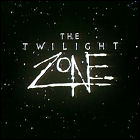 CBS airs the 31st episode of a revival of Rod Serling’s The Twilight Zone. Susan Blakely and William Allen Young star in an episode comprised of two short stories, The Card and The Junction.
CBS airs the 31st episode of a revival of Rod Serling’s The Twilight Zone. Susan Blakely and William Allen Young star in an episode comprised of two short stories, The Card and The Junction.
This series is not fully chronicled in the LogBook. You could join theLogBook team and write this guide or support the webmaster’s efforts to expand the site.
More about The Twilight Zone in the LogBook and theLogBook.com Store
The Twilight Zone now streaming on Paramount Plus

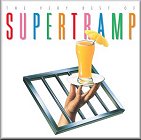 A&M Records releases
A&M Records releases 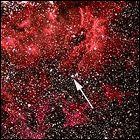 Astronomers both amateur and professional glimpse the first supernova to occur in the age of modern science. Given the name Supernova 1987A, the huge burst of light – visible to the naked eye in Earth’s southern hemisphere by the early summer months of 1987 before it begins fading out – is a collapsing star on the edge of the Tarantula Nebula. The star previously seen in that location is a blue supergiant, which wasn’t a likely candidate to go nova according to the existing theories of stellar evolution at the time. In the 1990s, the slowly expanding ring of debris rushing outward from Supernova 1987A becomes a favorite observation target for the Hubble Space Telescope. The supernova is more than 150,000 light years away from Earth’s solar system in the direction of the Large Magellenic Cloud.
Astronomers both amateur and professional glimpse the first supernova to occur in the age of modern science. Given the name Supernova 1987A, the huge burst of light – visible to the naked eye in Earth’s southern hemisphere by the early summer months of 1987 before it begins fading out – is a collapsing star on the edge of the Tarantula Nebula. The star previously seen in that location is a blue supergiant, which wasn’t a likely candidate to go nova according to the existing theories of stellar evolution at the time. In the 1990s, the slowly expanding ring of debris rushing outward from Supernova 1987A becomes a favorite observation target for the Hubble Space Telescope. The supernova is more than 150,000 light years away from Earth’s solar system in the direction of the Large Magellenic Cloud. NOAA’s GOES-7 Geostationary Operational Environmental Satellite is launched from Cape Canaveral into a geosynchronous orbit now designated GOES-EAST to monitor weather patterns over the United States. Originally intended for a 1986 launch, GOES-7 has been kept on the ground by the investigation into the destruction just after launch of its predecessor, GOES-G. GOES-7 will become the first of the GOES satellites to operate in both the GOES-EAST and GOES-WEST orbits, and will be retired from active weather-watching duty in 1999, becoming a communications relay satellite until it is decommissioned in 2012.
NOAA’s GOES-7 Geostationary Operational Environmental Satellite is launched from Cape Canaveral into a geosynchronous orbit now designated GOES-EAST to monitor weather patterns over the United States. Originally intended for a 1986 launch, GOES-7 has been kept on the ground by the investigation into the destruction just after launch of its predecessor, GOES-G. GOES-7 will become the first of the GOES satellites to operate in both the GOES-EAST and GOES-WEST orbits, and will be retired from active weather-watching duty in 1999, becoming a communications relay satellite until it is decommissioned in 2012.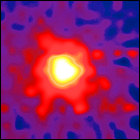 A victory lap after its successful study of Halley’s Comet in 1985 and 1986, the Pioneer Venus Orbiter uses its unique position at the solar system’s second planet to observe another comet, the recently-discovered Comet Wilson. Spotted for the first time only the year before, little is known about Comet Wilson, a lack of data that Pioneer Venus helps to correct by imaging the comet in the ultraviolet portion of the spectrum. Pioneer Venus will also study two other comets later in 1987.
A victory lap after its successful study of Halley’s Comet in 1985 and 1986, the Pioneer Venus Orbiter uses its unique position at the solar system’s second planet to observe another comet, the recently-discovered Comet Wilson. Spotted for the first time only the year before, little is known about Comet Wilson, a lack of data that Pioneer Venus helps to correct by imaging the comet in the ultraviolet portion of the spectrum. Pioneer Venus will also study two other comets later in 1987. The 41st episode of Steven Spielberg’s anthology series Amazing Stories airs on NBC. Bob Balaban (Close Encounters Of The Third Kind, 2010: The Year We Make Contact) guest stars in an episode co-written and directed by Paul Bartel.
The 41st episode of Steven Spielberg’s anthology series Amazing Stories airs on NBC. Bob Balaban (Close Encounters Of The Third Kind, 2010: The Year We Make Contact) guest stars in an episode co-written and directed by Paul Bartel. EMI Records releases the
EMI Records releases the 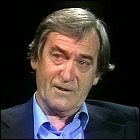 Patrick Troughton, the first actor to inherit the lead role of Doctor Who from another actor (and still one of the best-loved incarnations of the time-traveling Doctor), dies at the age of 67 on the second day of a science fiction convention in Columbus, Georgia. Despite worries about a persistent heart condition (he had already suffered heart attacks in 1978 and 1984), Troughton had made the trip to America against his doctor’s advice, suffering a fatal third heart attack after breakfast. His final TV appearance, the series Knights Of God, will air later in the year, having actually been filmed in 1985.
Patrick Troughton, the first actor to inherit the lead role of Doctor Who from another actor (and still one of the best-loved incarnations of the time-traveling Doctor), dies at the age of 67 on the second day of a science fiction convention in Columbus, Georgia. Despite worries about a persistent heart condition (he had already suffered heart attacks in 1978 and 1984), Troughton had made the trip to America against his doctor’s advice, suffering a fatal third heart attack after breakfast. His final TV appearance, the series Knights Of God, will air later in the year, having actually been filmed in 1985. The Soviet Union launches the first Kvant module to join with the Mir core module. An expansion originally devised for the Salyut 7 space station, Kvant provides additional working space and life support systems aboard Mir as, well as a gyroscopic stablization system to keep the station properly oriented without the constant use of engines and fuel. Years later, the basic Kvant design will be developed further in Russia’s contributions to the International Space Station.
The Soviet Union launches the first Kvant module to join with the Mir core module. An expansion originally devised for the Salyut 7 space station, Kvant provides additional working space and life support systems aboard Mir as, well as a gyroscopic stablization system to keep the station properly oriented without the constant use of engines and fuel. Years later, the basic Kvant design will be developed further in Russia’s contributions to the International Space Station.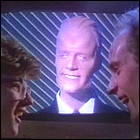 The
The 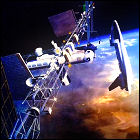 President Reagan approves a $10,000,000,000 budget for a redesigned, pared-down Space Station Freedom, to be constructed over sixteen Space Shuttle launches beginning in 1994, with Freedom not being fully operational until 1996. To the stern disapproval of the scientific community, almost all laboratory space has been removed from Freedom’s design proposal, leaving only Japan and the European Space Agency to provide lab space. Without the space for American astronauts to conduct scientific experiments, Space Station Freedom’s new primary mission is quite clearly stated to be to catch the American space program up with, or surpass, the Soviet Union’s long-duration space missions aboard the Mir space station. While the Preisdent approves of the slimmed-down station design, NASA must now run the gauntlet to get Congressional approval to proceed.
President Reagan approves a $10,000,000,000 budget for a redesigned, pared-down Space Station Freedom, to be constructed over sixteen Space Shuttle launches beginning in 1994, with Freedom not being fully operational until 1996. To the stern disapproval of the scientific community, almost all laboratory space has been removed from Freedom’s design proposal, leaving only Japan and the European Space Agency to provide lab space. Without the space for American astronauts to conduct scientific experiments, Space Station Freedom’s new primary mission is quite clearly stated to be to catch the American space program up with, or surpass, the Soviet Union’s long-duration space missions aboard the Mir space station. While the Preisdent approves of the slimmed-down station design, NASA must now run the gauntlet to get Congressional approval to proceed.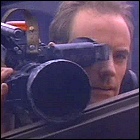 The
The 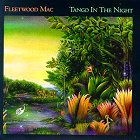 Warner Bros. Records releases the album
Warner Bros. Records releases the album  The
The  The
The  The
The  NASA has to borrow some of its own spare parts back from the Smithsonian Air & Space Museum to begin engineering mock-up work on the unmanned Venus radar mapping probe Magellan. As JPL works on modifications to a backup central bus component left over from the Voyager program, a physical copy of that bus from an engineering backup of the Voyager spacecraft is loaned back to JPL, shipped to Pasadena from Washington, D.C. (This loan saves JPL the trouble of building another replica of the bus, the central hub of the spacecraft containing its computer and electrical systems, which could add significant cost to the preparations.) The real Magellan, due to be launched soon after the currently grounded space shuttle program resumes, will cut costs by incorporating unused backup equipment from its predecessors, including a Voyager central bus and high-gain antenna, a medium-gain antenna spare from the Mariner missions to Mars, and a Galileo data handling system.
NASA has to borrow some of its own spare parts back from the Smithsonian Air & Space Museum to begin engineering mock-up work on the unmanned Venus radar mapping probe Magellan. As JPL works on modifications to a backup central bus component left over from the Voyager program, a physical copy of that bus from an engineering backup of the Voyager spacecraft is loaned back to JPL, shipped to Pasadena from Washington, D.C. (This loan saves JPL the trouble of building another replica of the bus, the central hub of the spacecraft containing its computer and electrical systems, which could add significant cost to the preparations.) The real Magellan, due to be launched soon after the currently grounded space shuttle program resumes, will cut costs by incorporating unused backup equipment from its predecessors, including a Voyager central bus and high-gain antenna, a medium-gain antenna spare from the Mariner missions to Mars, and a Galileo data handling system.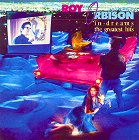 Virgin Records releases the
Virgin Records releases the 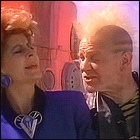 The
The 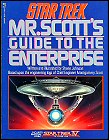 Pocket Books releases the in-universe reference book
Pocket Books releases the in-universe reference book  The
The 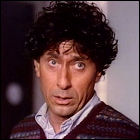 CBS airs the
CBS airs the  Fox airs
Fox airs 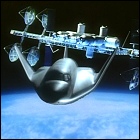 The
The